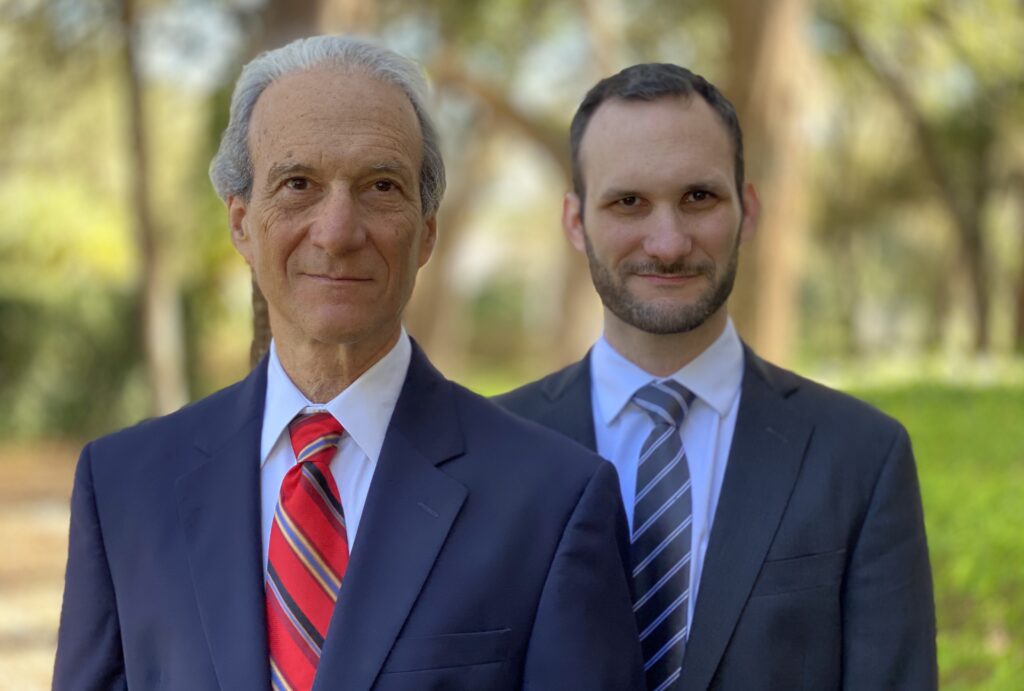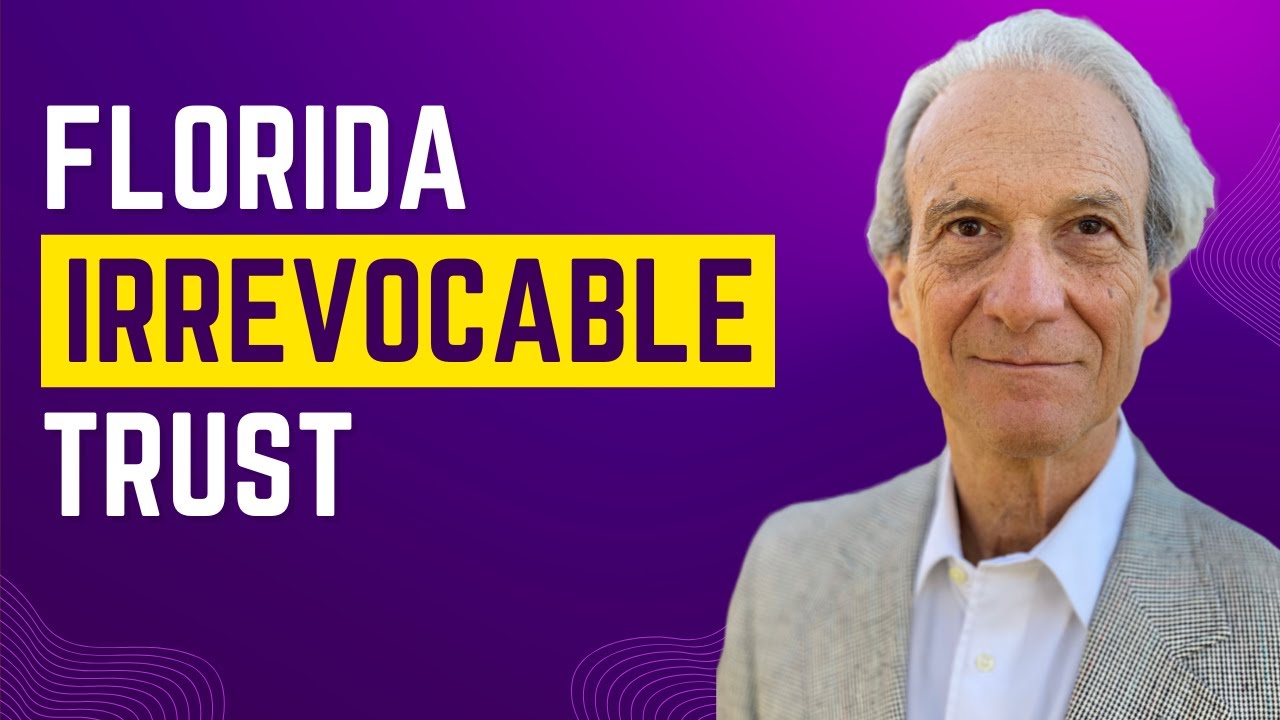Pros and Cons of Irrevocable Trusts
What Is an Irrevocable Trust?
An irrevocable trust is an agreement among a settlor, trustee, and beneficiaries that cannot be revoked or amended. The trustmaker, or settlor, cannot take back property they transfer to an irrevocable trust. The trustmaker may not add or remove beneficiaries, nor can they change the terms and provisions of an irrevocable trust agreement.
Transfers of assets to an irrevocable trust are a permanent gift of property for the benefit of other people designated as trust beneficiaries. The trustmaker cannot change their mind about property placed in an irrevocable trust. An irrevocable living trust in Florida is an irrevocable trust made during the trust settlor’s lifetime.
How Irrevocable Trusts Work
Florida irrevocable trust laws are found in Chapter 736, Florida Statutes, and in common law and court decisions interpreting trust law. Florida law provides that property held in an irrevocable trust is protected from the creditors of the trust beneficiaries.
The most important legal principles that provide asset protection to trust beneficiaries are:
- The spendthrift protection
- The discretionary distribution protection.
We help families throughout Florida.
Since 1991, Alper Law has helped thousands of clients with estate planning and with protecting their assets for their families. We can provide all services remotely. Start with a free phone or Zoom consultation.

Spendthrift Provisions for an Irrevocable Trust
A beneficiary’s interest in an irrevocable trust established for their benefit by another person is protected from that beneficiary’s creditors if the trust agreement includes a spendthrift clause.
A spendthrift clause states that a beneficiary may not assign or convey their beneficial interest. This trust clause is a “spendthrift” clause because the provision was initially designed to prevent an imprudent beneficiary from voluntarily squandering their inheritance by assigning their trust interest to another person. Spendthrift protection is based on the idea that a beneficiary’s creditors cannot force a beneficiary to do involuntarily what the beneficiary cannot do voluntarily under the trust document.
So, when the trustmaker prohibits the beneficiary from assigning their trust interest voluntarily to a third party, the beneficiary’s creditors cannot force an involuntary assignment to pay the beneficiary’s debts.
Florida courts have consistently applied asset protection to irrevocable trusts. Florida law provides that a spendthrift provision must expressly restrain voluntary and involuntary transfers of a beneficiary’s trust interest to protect the beneficiary’s interest from creditors. After a trustee makes a distribution from a spendthrift trust to a beneficiary, the money in the beneficiary’s hands is no longer protected from the beneficiary’s creditors by the trust spendthrift clause.
Florida law makes two exceptions to the spendthrift protection. First, the law prohibits a trustee of an irrevocable trust from withholding a distribution required under the trust agreement solely to protect the distribution from the beneficiary’s creditors. Overdue mandatory distributions can be garnished from a spendthrift trust.
The second exception from spendthrift trust protection applies to “special creditors” or “creditors of last resort.” These special creditors include claims by a beneficiary’s child, claims of a former spouse for support and maintenance, and claims by creditors (such as an attorney) who have provided services for the protection of a beneficiary’s interest. The special creditor may garnish a beneficiary’s interest and distributions from an otherwise protected spendthrift trust.
Important: A transfer of assets into an irrevocable trust can still be attacked by creditors of the trust grantor as a fraudulent conveyance.
Irrevocable Trust Discretionary Distributions
There is another basis of protection of a beneficiary’s interest in an irrevocable trust agreement that gives the trustee discretion over the amount and timing of distributions to beneficiaries. These trusts are referred to as “discretionary trusts.”
Section 736.0504(1) of Florida law states that a beneficiary’s creditor cannot compel a trustee to make a discretionary distribution of income or principal to a trust beneficiary when the distribution would become vulnerable to the beneficiary’s creditors. This protection against forced distributions is valid regardless of whether the trustee’s discretion is subject to an express standard and regardless of whether the trustee may have abused their discretion.
Most spendthrift trusts include discretionary distributions. However, the legal protection from creditor judgments of discretionary distributions is separate and distinct from the protection provided by spendthrift provisions.
The asset protection of an irrevocable discretionary trust applies even when the beneficiary is also the trustee, provided that the trustee’s discretion to distribute property to themselves is subject to an ascertainable standard.
A typical ascertainable standard for discretionary distributions is the beneficiary’s health, education, maintenance, and support (referred to as “HEMS” discretion). If the trust agreement’s provisions include an appropriate HEMS standard, a debtor who is both a trust beneficiary and the appointed trustee over their own trust share can withhold distributions to protect the trust property from their creditors.
Advantages of Irrevocable Trusts
1. Protection from Future Creditors
Assets transferred to an irrevocable trust are no longer owned by the grantor and are not subject to judgments against the trustmaker or beneficiary.
This separation creates a legal barrier between the assets and the grantor’s future creditors.
A properly drafted and funded irrevocable trust offers one of the strongest forms of protection against civil judgments and collection efforts.
2. Effective Tax and Estate Planning
An irrevocable trust is a tool for long-term estate and tax planning. It allows the grantor to remove assets from their taxable estate, which can reduce or eliminate future estate tax exposure.
More importantly, the trust structure ensures that wealth is managed and distributed according to the grantor’s wishes, protected from future beneficiaries’ creditors, divorcing spouses, and poor financial decisions.
We use irrevocable trusts as part of multi-generational planning strategies to secure assets for children and grandchildren.
3. Allows for Advanced Planning Strategies
Irrevocable trusts allow for more complex asset protection and estate planning structures. They are used to create Spousal Lifetime Access Trusts (SLATs), domestic asset protection trusts, and offshore trusts.
These strategies can provide income to a spouse, protect assets from future lawsuits, and place assets beyond the reach of U.S. courts.
Disadvantages of Irrevocable Trusts
1. Loss of Direct Control Over Assets
Once assets are transferred into an irrevocable trust, the grantor gives up legal ownership and control. The assets are managed by a trustee, not the person who created the trust.
This loss of control is necessary for the trust to provide asset protection, but it also means the grantor cannot unilaterally access or revoke the trust property. Any retained control could undermine the trust’s effectiveness in shielding assets from creditors.
2. Irrevocability Limits Flexibility
By design, irrevocable trusts cannot be easily modified or revoked.
In most cases, the terms of the trust are locked in once the trust is created and funded. This rigidity can become a disadvantage if circumstances change, such as tax laws, family dynamics, or financial goals.
While some modifications may be possible under Florida law through judicial or non-judicial agreements, changes require consent from all beneficiaries.
3. Vulnerable to Fraudulent Transfer Challenges
An irrevocable trust does not protect assets from existing or imminent creditors.
Transferring assets to an irrevocable trust is a legal change of ownership. If that transfer is made when a creditor’s claim is pending or foreseeable, it may be set aside as a fraudulent transfer.
Courts can reverse the transfer if they determine it was made to hinder or delay a creditor or if it rendered the debtor insolvent.
The trust only protects assets from future creditors once the applicable statute of limitations on fraudulent transfers has expired. However, an irrevocable offshore trust can still sometimes provide an asset protection benefit, despite concerns about fraudulent transfers.
Florida Trust Execution Requirements
An irrevocable trust must be executed properly to be valid.
Under section 736.0403 of Florida law, if a revocable trust has any testamentary provisions, then the trust must be executed with the same formalities of a will. That means the trust must be signed in the presence of two witnesses and a notary. Typically, the trust will have a self-proving affidavit as well.
Contributions to an irrevocable trust are current gifts, not testamentary gifts, so irrevocable trusts do not have the same requirement for will formalities.
Our most popular article…
We provide a complete guide to Florida asset protection law.
Self-Settled Florida Irrevocable Trusts: No Protection
A self-settled trust is a trust where the trustmaker is also a beneficiary. In other words, a self-settled trust is created by a trustmaker for their own benefit.
A revocable living trust is an example of a self-settled trust. An irrevocable self-settled trust provides no asset protection benefits. Florida trust law expressly states that regardless of whether a self-settled trust agreement includes a spendthrift provision, the trustmaker’s property transferred to the trustmaker’s trust is subject to the trustmaker’s creditors’ claims. Florida courts have denied creditor protection to self-settled trusts for reasons of public policy.
How to Modify an Irrevocable Trust
The terms of an irrevocable trust agreement expressly state that the trust agreement may not be amended, and the trust itself may not be revoked. Still, there are situations when a family may want to change an irrevocable trust. Changes may be warranted because of changes in family financial condition, changes in tax laws, revisions in the trustmaker’s personal goals, beliefs, or any number of other circumstances. Florida laws allow families to alter irrevocable trust when all the affected parties to the trust agree that modification is appropriate.
The Florida statutes permit an interested person to ask a court to “reform” a trust agreement when they can prove by clear and convincing evidence that the terms of the trust do not accomplish the trustmaker’s intent because of mistake of fact or law. A court may consider evidence of the trustmaker’s intent that contradicts the clear terms of their intent stated in the trust agreement.
A court may also modify an irrevocable trust’s terms to provide a tax benefit to the trustmaker, provided the modification is not contrary to the trustmaker’s overall intent. Some irrevocable trusts are created to achieve tax reduction, and changes to tax law make the trust ineffective or counter-productive.
Often the trust beneficiaries do not know about an irrevocable trust or trust terms until after the trustmaker’s death. Then, all the beneficiaries can decide that the terms of the trust are not beneficial. The Florida Statutes provide that an irrevocable trust may be amended after the trustmaker’s death with the unanimous agreement of all trust beneficiaries and the trustee.
Another procedure to indirectly change an irrevocable trust is what is known as “decanting” a trust. Under Florida Statute 736.0117, a trustee with the power to use trust principal for the benefit of one or more beneficiaries may exercise this power by transferring the trust principal to the trustee of a second trust for the current benefit of one or more of the same beneficiaries. The decanting process effectively replaces the terms of the irrevocable trust agreement with a new agreement applicable to the second trust. Decanting, properly done, does not have a tax effect.
How to Terminate an Irrevocable Trust
An irrevocable trust terminates upon a certain date or upon conditions expressed in the trust agreement. If a trust does not include a termination provision, the trust will endure for a long time, and the trust parties will be burdened with trust administration, including, for example, tax returns and trustee fees.
Florida law provides a way to terminate an uneconomical irrevocable trust. The law states that a trustee may terminate an irrevocable trust with less than $50,000 of assets if the trustee concludes that the amount of assets does not justify the cost of continued trust administration.
There are other ways to terminate an irrevocable trust through judicial proceedings or by including provisions in the trust agreement that provide flexibility to the trustee or an appointed trust protector.
Irrevocable Insurance Trusts
Irrevocable trusts in Florida are used for reasons other than asset protection. A common example is ownership of life insurance policies. An irrevocable life insurance trust, also known as an ILIT, is an irrevocable trust created to own a life insurance policy. Like other irrevocable trusts, the insurance trust cannot be rescinded, amended, or modified with narrow exceptions (discussed below). Once the trustmaker contributes a life insurance policy to the trust, they cannot later reclaim ownership of the policy or change the terms of either the policy or the trust.
An irrevocable insurance trust is sometimes used for estate tax planning. If an ILIT is properly structured, the death benefits paid to the trust will be free from inclusion in the taxable estate of the insured trustmaker for estate tax purposes. In addition, the ILIT can also be structured so that the trust can distribute money to the insured’s surviving spouse without inclusion in the surviving spouse’s taxable estate. An ILIT that includes a spendthrift provision or discretionary distributions to ultimate beneficiaries protects death benefits retained in trust from future creditors or divorced spouses of the named beneficiaries.
Exception Permitting ILIT Changes
There is an IRS exception for a trustmaker to modify an otherwise irrevocable ILIT. The IRS allows people to modify an insurance trust by creating a new trust with different trust provisions and assigning the life insurance policy to the newly formed trust. The IRS does not consider the assignment of the life insurance to the new trust to constitute a taxable event so long as the trustmaker is the same and the trustmaker is liable for income tax on all trust income.
How to Create a Life Insurance Trust
Creating a Florida insurance trust involves coordination between the financial adviser who recommends and sells the policy, an attorney who drafts the legal trust documents, and the person named as trustee of the trust. We suggest the following procedures for establishing a life insurance trust for the purchase and ownership of a life insurance policy:
- Professional legal and tax advisors should recommend an insurance trust and explain its advantages.
- The trustmaker decides the terms of the trust (including the establishment of beneficiaries and the choosing of both initial and successor trustees).
- Medical examination procedures should be commenced. There is no need to draft a trust if the trustmaker is not insurable.
- The attorney drafts the insurance trust.
- The trustmaker and trustee sign the insurance trust.
- The trustee applies for an employer identification number (IRS Form SS-4).
- The trustee applies for life insurance and signs the application as insurance owner. If the insurance company requires a check with the application, the application should not be commenced until the trustmaker makes an initial gift to the insurance trust to cover the initial premium and the trustee notifies the beneficiaries that a gift is being made to the trust for their benefit.
- The trustee completes the application and pays the initial premium.
Dissolving an Irrevocable Trust
An irrevocable trust can be dissolved pursuant to the terms in the trust document.
A typical trust document will allow the trustee to dissolve the irrevocable trust if it is no longer economically feasible to maintain the trust for the beneficiaries. In other words, if the trust assets diminish where there is not much left in the trust estate, the trust document will usually allow the trustee to dissolve the trust.
FAQs about Irrevocable Trusts
Why would someone want an irrevocable trust?
You should consider forming an irrevocable trust if (1) you want to protect the trust assets from creditors of yourself or the trust beneficiaries, (2) you want to reduce estate taxes, particularly with life insurance (3) you want to provide for a beneficiary without jeopardizing government benefits.
Who owns the assets in an irrevocable trust?
Assets in an irrevocable trust are owned by the trust itself. Because the trust is irrevocable, the grantor cannot take back the trust for their own benefit.
Which is better, a revocable or irrevocable trust?
A revocable trust is better for typical estate planning needs, such as providing for children and avoiding probate. An irrevocable trust is better for asset protection during the grantor’s lifetime or for avoiding estate taxes on insurance proceeds.
Sign up for the latest information.
Get regular updates from our blog, where we discuss asset protection techniques and answer common questions.










